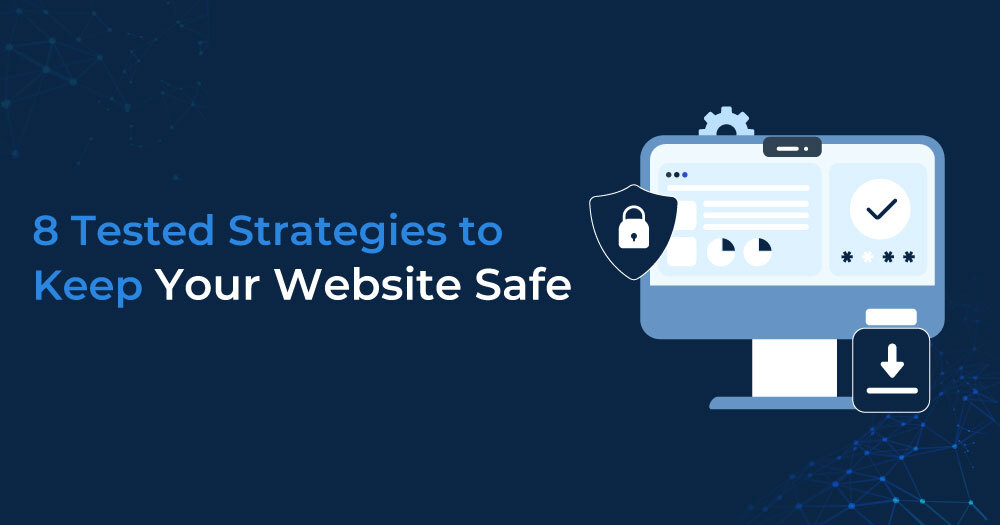Here are 8 easy steps to improve website security:
1) Ensure your passwords are strong and update them regularly
Keeping your passwords secure and updating them regularly is crucial for website security. Around 80% of hacking-related breaches are due to weak passwords. By creating strong passwords and updating them frequently, you can significantly enhance your site’s security.
Utilize password generators to generate robust passwords. Our password generator allows you to determine the length of your password and choose if you want to include uppercase and lowercase letters, symbols, and numbers.
2) Obtain an SSL certificate
The following task on your website security checklist is obtaining a Secure Sockets Layer (SSL) certificate — a fundamental aspect of website security. An SSL certificate aids in ensuring that data transfers and sensitive personal information on your site, such as credit and debit card payments, remain secure.
For instance, when a customer buys a product from your website, it is crucial to safeguard their information, including their address or phone number. Additionally, having an SSL certificate can enhance the perceived trustworthiness of your website among online shoppers.
Given that Google displays a padlock icon next to your URL upon having an SSL certificate, users are assured of your website’s security. Consequently, this instills trust in both your customers and your data, potentially driving an increase in sales.
3) Select the appropriate content management system (CMS)
Content management systems (CMS) not only allow you to oversee your website content but also support in enhancing your site’s security. Whether contemplating the adoption of a CMS or currently using one, opt for a CMS that prioritizes a secure website.
A beneficial CMS can assist in defending your website and ensuring minimal security gaps. It can also help oversee program code and maintain faster website processes. Opting for a popular CMS platform, such as WordPress, is a great way to enhance the security of your website.
4) Update your extensions and plugins
If you use a CMS platform like WordPress, you probably have access to tools and plugins that can improve website security and streamline processes.
While these add-ons and plugins can save time and enhance your SEO efforts, businesses often have outdated plugins that may jeopardize their website’s security.
Obsolete and vulnerable plugins can leave your website open to attacks, leading to data loss and eroding customer trust and loyalty. It is vital to regularly update your plugins and extensions to ensure they have the latest security features.
5) Limit user permissions
Granting all team members access to passwords, data, and site update privileges can create a security risk. Some team members may not adhere to proper protocols or remember to update passwords regularly. Restricting user permissions is a key security practice for websites. For instance, if using a password generator, sensitive details should not be shared with the entire team. Moreover, for CMS platforms, user access can be managed using permission levels like administrator, editor, or author.
6) Invest in anti-malware software
Malware can severely impact your site’s security, affecting user experience, search engine rankings, and consumer engagement. Investing in anti-malware software is crucial for safeguarding your business, website, and customers. Utilize malware detection tools to swiftly identify and eliminate any harmful software, ensuring the safety and integrity of your site.
7) Back up your website
Backup systems are essential for quickly restoring your site in case of server failures or other issues. By maintaining a backup of your website, you can promptly address issues such as broken pages or hacked sites. Regularly backing up your site is a fundamental website security practice. Automate backups using tools like Handy Backup or eBackupper to ensure that your website data is always secure.
8) Continuously test your website
Regularly testing your website is a critical security measure. Without consistent testing, you may overlook potential security vulnerabilities on your site. Set aside time for periodic website testing to proactively identify and address any weaknesses, enhancing the overall security of your online platform.
Website testing can assist in identifying areas requiring improvement and enhanced security measures. For instance, testing pages can reveal error messages, broken links, or HTTP redirects rather than HTTPS.
Promptly addressing any site issues encountered and enhancing preventive measures can help avoid future occurrences.
Setting aside time to test your website before launching new pages is a great way to refine your site and add final touches, ensuring maximum security and safety for your business and visitors.
